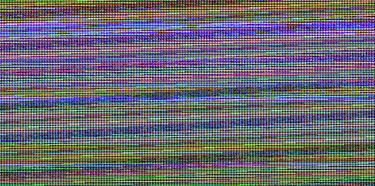
I stepped out this morning, as I often do, to get some espresso. Helps me focus, and I have a final paper to work on today. With a little forethought, and a little persistence, you could’ve come with me.
As I got myself ready to go outside, you could’ve trained the eye of Google Earth on my apartment. Once I started on my way to the bank, you could’ve joined me with Google Street View. Once at the ATM, you have your choice of either capturing the surveillance feed from their external security cameras, or you could ask the bank for the footage from the ATM itself.
Hello!
As I walked back to the nearest bus stop, maybe you could find me in the background of a traffic camera ticketing photo; sorry, I’m slightly blurry since I haven’t had my espresso yet. Once on the bus, I may or may not be under surveillance, as the warning so coyly suggests. That’s ok, since once I get off the bus you can find me with Google Street View again, or with one of our native Chicago surveillance cameras. Visuals are overrated anyway, so if you’re really enterprising you can find me by tracing my cell phone GPS identification. And any number of private corporations will happily supply you with my personal history if you’ve got cash money. If all else fails, tomorrow I’ll be driving; there’s that little mapping system in my car, and savvy hackers can help you pinpoint that.
As you may have heard, Time magazine said that you were the person of the year last year. Little old you. Really,though, you have a lot more influence than you think, and not necessarily in the way you want. It goes beyond levels of surveillance that are normally discussed or commonly acknowledged. This blog is watching you, actually, and I get statistics on my readers second by second. If I sign up for Google Analytics or a similar service I could get more detailed data, with practical business applications. (A recently ended program called Spyjax used to collect data on people’s browsing histories while showing them how it was being done, in order to heighten Internet user’s awareness of spyware and the like. Unfortunately he’s closed shop to save bandwidth, so no widget for me.)
Chicago contracts with many different security providers, it’s true, though we are not quite as widely watched as in London, where there’s approximately one camera per fourteen people. But then, maybe we are…
Personal data is, after all, the new black.
There was a movement after the Second World War to require the use of national identification numbers, and the government lost the fight to the will of the people. Big business was behind the push, and considering what happened in the years that followed, the people lost the fight anyway. But the truth is, we are the ones who willingly gave up the ghost.
Business began to require us to submit to them our social security numbers if we wanted to do business, which, unless we willingly provided it to them, they had no right to have access to. But we did, with little resistance. And our government was happy, because they got what they wanted through capitalism, not legislation, and in the sixties restrictions on the sale or distribution of our SS numbers, or, let’s be honest with ourselves, our national identification number, were loosened. For example, in 1961, the IRS was permitted to use the social security number for identification, one of the major stumbling blocks in initial movements toward a national ID.
I would bet you that not only your credit card company and bank have this number, but your super market, your doctor, your insurance companies, your power supply providers, your home rental agency, your car rental agency, and maybe even your Internet provider. When colleges began using using SS numbers for student identification purposes there was a large outcry, but due to the high circulation rate of students, lasting legislation or regulation is still problematic, with an estimated use today on campuses of about 50%. My undergraduate school used SS ID numbers, so it would be printed on anything mailed, presented to, or just related to me during my time there. Hardly a defense of my privacy or security.
What’s interesting to me is that when SS numbers are used so overtly in college documents there is a passionate outcry. Yet when it is a supposedly “private” transaction such as a sale of goods or services, we do not hold to the same standard of personal security. This national temperament is so obvious, if you are looking for it.
Just look at this website portal which links to reality television shows. For every show that encourages us to observe one another in an ostensibly responsible way, such as America’s Most Wanted, there are at least ten whose motives are a little more suspect (Cops, Fear Factor, Maury Pauvich, The White Rapper Show, Elimidate, I Want a Famous Face, Real World, Combat Missions, Extreme Makeover, and House Arrest. See how easy that was?) In a way it’s fun to see ourselves reflected, even if in an unflattering way, through major media outlets. The undercurrent of a modern carny sideshow is unavoidable, and perhaps even ridicule of the poor and disenfranchised. I’ve honestly never sat through a whole episode of Rikki Lake or Jerry Springer because, halfway through, I would always imagine friends of mine who are homeless, or myself (not long enough ago) when I couldn’t afford ramen, or heat for my apartment. What would I be willing to do, if it comes down to it? Honestly, though, reality TV betrays middle class values for the most part. So is it that we want to be celebrities so much that we desire to be under a similar type of scrutiny so as to feel similarly valued?
Ever heard of Za Gaman, or other Japanese game shows?
Or how about Remote Lounge in NYC. If you’ve never been there, I highly recommend it. I’m serious. It is exhilarating, adrenaline-inducing and wildly creepy. The whole bar is wired, and the idea is that if you see someone you want to meet or hook up with, just talk to them over your own little personal camera station. As though Londoners were flirting with one another using their CCTV. Here’s a bit of their take on it: “Rather than focus on the “Big Brother” association with the surveillance technology that has been co-opted and adapted to use in the lounge, CEV founders point out that their version of telepresence is used to very different ends then traditional surveillance implementations. First of all, access to the system is mutual, bilateral and consensual – nobody gets to violate anyone else’s privacy in a manner that they would not be subject to themselves. Secondly, the environment is designed to encourage exploration, experimentation and human interaction rather than to control or protect people or property.”
And it’s emblematic of where our heads are at today. The other night I trawled through some Flickr showcases, and searched for people who I haven’t spoken to for years. I didn’t find many of them, but did find about four; there they are for me to quietly watch, a voyeur of their lives today. I went to Youtube, and even found snippets of video from a 1990 talent show at my high school, a talent show I was in! (Sadly the bit with me in a plastic pink skirt playing bongos and singing with my friends about Queen Liliuokalani wasn’t on there.) Pixelated ghosts beckon and beguile me through the ether like my own personalized Videodrome.
The thing is, however disturbing some of this is to me, I am equally awestruck, and humbled by the direction we have taken. There are extremely positive aspects to it, largely in the realm of accountability. Joe Biden, Michael Richards, Don Imus and the like had better be careful. If only we can keep reporters from being embedded with the military and get back to honest reporting… But then, with blogs such as Baghdad Burning, A Star from Mosul, and other amazing front-line blogging of so many people telling real stories and looking for loved ones, maybe we can move away from sponsored reporting. As with many double edged swords, the process can be one of promise and opportunity, so long as we do not abdicate responsibility, and quietly give up the ghost.

“It called forth nearly all the constituent powers of the century. It revealed the century as it liked to relax when wearing none of its masks.”
Ok, Giedion is talking about patent furniture, but it sounds like the Internet to me. I won’t give up on it for anything, though, and I will fight like Voltaire for it to remain unfiltered. The possibilities are just too great, and if we let it get delimited by force or by censure, only the military and outlaws will be able to take advantage of it.






 Posted by Vaucanson's Duck
Posted by Vaucanson's Duck 


















